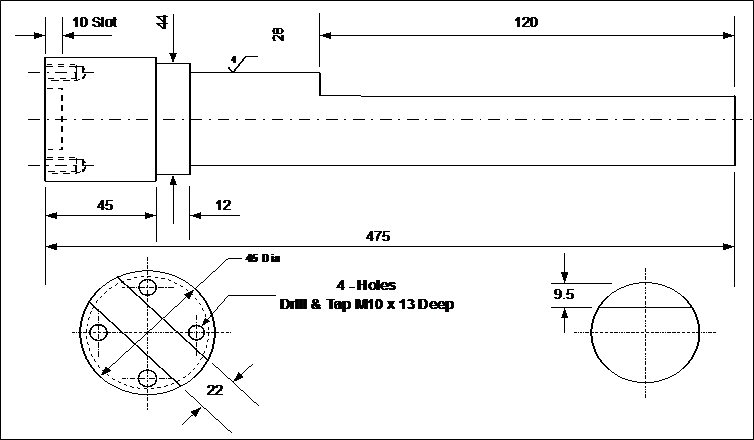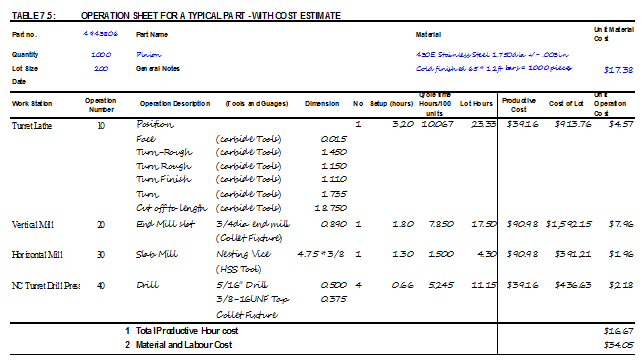8.04 - Product Cost Estimating Methods
Overview
Cost estimating methods fall into three broad categories – Parametric, Analogy and Industrial Engineering. Cost estimates are a forward prediction of future costs and as such are affected by the cost of materials and the cost of turning those materials into useable products at the time of manufacture. In general methods from the first two groups are used to establish target costs and are sometimes called “top down.” Methods from the third group are used to confirm the attainment of Target Costs and are referred to as “bottom up.” This is not arbitrary and will vary by industry, product type or complexity and where the product is in its life-cycle. Cost Estimating methods applicability by product life-stage(s) are shown below.
Estimating Method
Life Cycle Stage |
Parametric |
Analogy |
Industrial Engineering (bottom-up) |
Concept |
Yes |
Yes |
|
Development |
Yes |
Yes |
Yes |
Production |
Yes |
|
Yes |
In-Service |
Yes |
|
|
It should be remembered that new products or systems are mostly a combination of previous products and systems or sub-systems in new applications. Some items will be scaled up or down as the new application requires. Therefore any new product project or programme will use a mix of the cost estimating methods to generate estimates in the various elements of the total product or system.
There will also be new design work to integrate existing products into the new overall product or system.
Unless specifically designed from the start as inter-changeable modules as part of a modular designed product the new circumstances under which an existing product is required to serve will present the most surprises to the unwary engineer.
Sub-systems rarely just bolt together in a similar fashion to “Erector”, “Meccano” or Lego set components unless the complete “SET” of elements is designed from the outset using a modular design approach.
See guides 6.17, 6.18, 6.19 & 6.20
Parametric Estimating Methods
Parametric Estimating can be as crude as a straight line weight to cost ratio similar to that used for costing castings. Casting suppliers will, of course, disagree with this approach as they will want to add a casting complexity factor to account for the numbers of cores and pattern complexity used in the production of the various types of castings. This illustrates what can happen with parametric estimating methods. They can quickly go from the simple to the complex. Cost estimating relationships (CER’S) must be accurately documented. Without adequate documentation of assumptions, the purpose of the parametric model, data sources and accuracy requirements, things can quickly get out of hand.
Typical simplistic parametric models used for various levels in the product structure:
- Systems Level e.g. Automobile cost: vehicle model type (mini, Midsize), body type (sedan, SUV, coupe etc), lux level (basic, L LX DLX etc), Engine Type (Diesel, petrol, etc)
- Sub-system Level e.g. Braking system: Gross Vehicle Weight etc
- Product Level e.g. engine: Capacity (900cc, 1000cc, 1100cc etc)
- Raw materials level e.g. Steel blank for body panel: panel type, area, shape etc.
- Process Level e.g. moulding of plastic: type of plastic, weight, complexity index, shot size.
Tools to assist the designer can be based on parametric cost estimating methods. These tools can be used for giving general direction on material / process selection. The designer then optimises the design for the recommend manufacturing process group.
Analogy Estimating Methods
Cost estimation by analogy usually varies in two dimensions from an existing product or system. The first is in the size or power rating difference from the known base model. Alternatively a “same as except for” approach can be used. The second will be an allowance for price escalation because the base item from which the comparison is drawn will have an historic cost and present or future cost is required for the new system or product. This can be done with Engineering Cost Indexes that are available from various sources or users can construct their own. Similar to parametric methods all the assumptions must be well documented for audit trail purposes. No secret or “black art” should be tolerated.
Industrial Engineering
Industrial Engineering Methods of cost estimating using CAPP systems are the most accurate. Their accuracy depends upon the maintenance of accurate basic element detail for raw materials, labour and processing operations. The example on next page is estimated using the detail method and the cost is estimated to be $34.05. Using the parametric method described in sections 6.16 and 6.17 (see reference 13) we get a cost of £20.45($31.44). This was probably a fluke but serves to illustrate what can be done to get rough cost estimates BEFORE detail design begins.
With the addition of specific parametric part characteristics it is possible to get the speed of parametric methods and the accuracy of industrial engineering cost estimating methods for items at the component level.
This can be deployed for gaining a competitive advantage by the use of parametric and industrial methods for simple assemblies provided the designed components of the assembly have defined generic routes or processes. Typical examples would be power transmission shafts or constant velocity joints in an automotive drive system. This would involve the development of parametric CAD models from which would be derived generic process plans for each component. The estimated cost would vary according to the size and length of the shaft or shafts which in turn would be derived from the power transmission requirements, vehicle wheelbase and track width etc.
The type of capability described above is the subject of much research. Early design tools are emerging that combine the capabilities of CAD/CAM and CAPP in an integrated environment. DFMA tools are an example. As noted previously, there is maintenance overhead to keep up-to-date data tables for material costs, regional labour costs, machine and process profiles and so forth.
However if management and cost accountants use the same tables as the design and
manufacturing engineers this should not be to oneous a task - and well worth the
investment.
Bottom-up part cost estimate example taken from ref. 11 page 261
Drawing of part to be estimated

Detailed Cost Estimate
